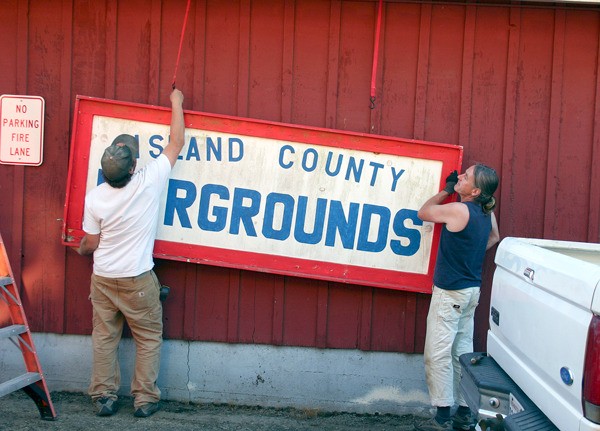Timothy Hull is giving fairgoers the chance to travel back in time.
Last year, Hull was traversing the fairgrounds on his bike and stumbled across a hidden gem — the fair’s history room. The small space had been somewhat neglected, and closed for the past three years, primarily, Hull speculates, due to a lack of available volunteers willing to take on the task of restoration.
“I went and met Sandey [Brandon, the fair administrator] and knocked on her door and introduced myself and simply asked if I could have a peek at the old books, and about 15 minutes later I had a really cool volunteer job to fix this place up,” he recalled.
The history room contains two conjoined areas with scrapbooks from as early as 1949 to the present. The books hold community and family memories as well as pieces of history such as letters from Bing Crosby and Bob Hope who were unable to attend as performers, but appreciated the invitation.
Last year, Hull was able to clean and repaint the room and re-organize the elder half of the materials, dating from mid-century through the 1970s, with help from friend Joe Menthe in Bayview who assisted in blowing up some of the more artistic images for display on the wall.
“Most of the ’50s are pretty well represented and so are the ’60s and then in classic fashion most of the ’70s are missing,” Hull said with a laugh.
“It is fun just to see our friends and neighbors having the simple fun that is the fair.”
The work was done in time for the 2013 fair, and was a success with attendees taking the time to peruse the photographs, old newspaper articles and entertainment lists. Some people, according to Hull, spent hours in the rooms telling stories and recounting moments past.
“I was really pleased,” he said. “I think the fair is a great equalizer in the community. People who you don’t necessarily cross paths during the rest of the year will all be here together. And it’s built on such a tremendous amount of volunteers and history and fun,” he said. “And the great thing about the fair is that in a lot of ways it hasn’t changed a lot. … I think it is important that we celebrate the fair as a part of our community’s history. So it’s a special thing for me to feel like I am a part of.”
This year, Hull is opening a second area which contains the more recent archives and photographs, mostly from the 1980s on.
“Moms and dads and kids can go through and find themselves in these [more recent] ones,” said Hull.
“The proudest moment was sitting here on the second day of last year’s fair and seeing three generations of the same family [a 90-year-old woman, her adult daughter and daughter’s son] and they are each finding themselves in the books,” he recalled. “It is fair history, but it is also personal history and I wasn’t expecting that when I started this project. I knew I wanted to make something special happen, but that was just really cool.”
Hull stressed that thanks should be given to the numerous volunteers who put on the fair each year, as evidenced by the various historical scrapbooks also compiled by volunteers.
“This isn’t anything that I’ve done. I’ve just painted and organized and cleaned,” he said gesturing to the two rooms full of assorted memorabilia. “This is what people who put on the fair have done, the people who created this archive.”



